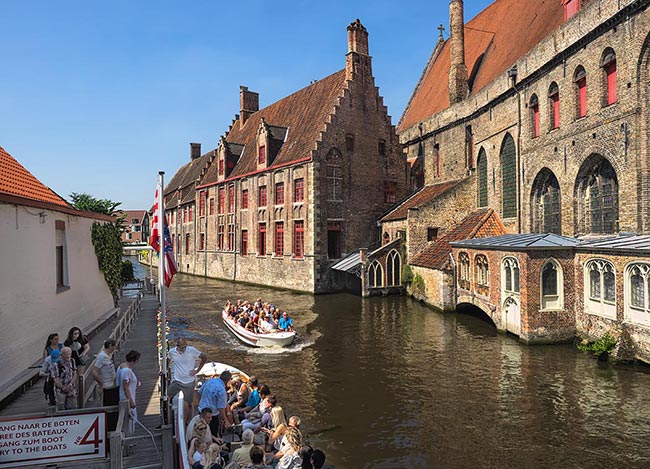Though this Flemish city is small enough to see on foot, one of the best ways to experience it is to take a boat ride on the historic canals of Bruges, Belgium. Bruges began life in the 9th and 10th century with a settlement on what is today likely Burg Square. To facilitate trade, canals were dug from the city center to a tidal inlet known as the “Golden Inlet,” which provided direct access to the North Sea. By the time Bruges received its city charter in 1128, it was exporting wool and cloth goods all over the world. Guild houses and a massive Cloth Hall were constructed around Market Square in Bruges, which became the undisputed heart and soul of the city.

Bruges was one of the most important port cities in the world for more than three centuries, until the Golden Inlet began to silt up around 1500. Simultaneously, the city of Antwerp was developing into a larger and more modern port that could accommodate vessels too large for Bruges’ system of canals. Bruges could not stave off competition from Antwerp and by the 17th century its importance as a port city had faded. Fortunately, the canals were maintained over the years. When the tourism industry began to take off in the 19th century, Bruges became a major tourist destination. Recent counts indicate that nearly eight million tourists visit the capital every year, and boat rides on the canals of Bruges remain one of the most popular activities for visitors.
